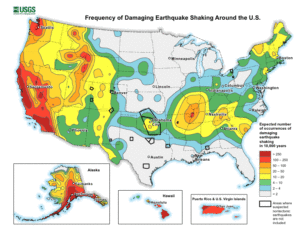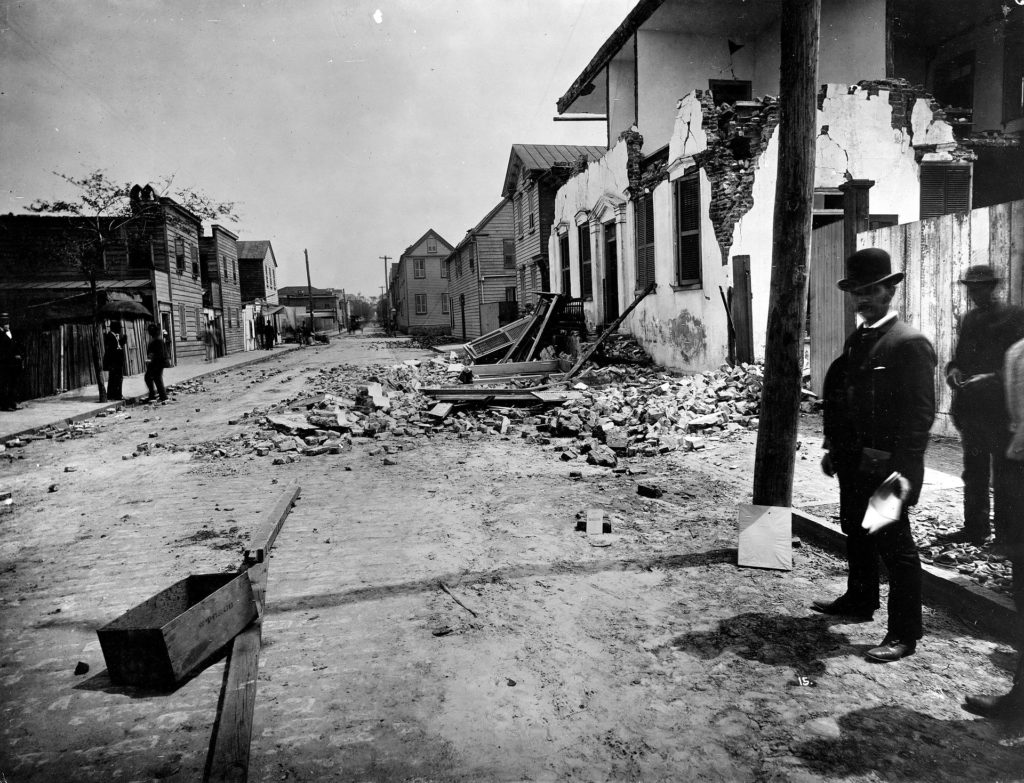
In the last 7 days, 14 earthquakes have struck the same general area around Coronaca, South Carolina which is south of Greenville-Spartanburg, west of Columbia, and north of Augusta, Georgia; authorities are warning about the possibility of more earthquakes in the hours and days ahead and want people taking appropriate steps to be prepared for that possibility. In the meantime, hundreds of people have reported feeling shaking or hearing loud booms to the USGS through their “Did you feel it?” website reporting tool.
Most of the earthquakes have struck within 3 miles of each other on the northeast shore of Lake Greenwood. There were two outliers that were 6 miles to the northwest on August 19 and 6 miles to the southeast on August 20. The strongest of this swarm was a magnitude 3.0 event while the weakest was a magnitude 1.7 event.

According to USGS, earthquakes with a magnitude of 2.0 or less are rarely felt or heard by people, but once they exceed 2.0 , more and more people can feel them. While damage is possible with magnitude 3.0 events or greater, significant damage and casualties usually don’t occur until the magnitude of a seismic event rises to a 5.5 or greater rated event.
The earthquake swarm has been impacting an area that lacks much seismicity. This swarm is not near another swarm that started northeast of Columbia in 2021 near the town of Elgin and has since wound down as of April of this year.
According to USGS, a swarm is a sequence of mostly small earthquakes with no identifiable mainshock. “Swarms are usually short-lived, but they can continue for days, weeks, or sometimes even months,” USGS adds.
According to USGS, “aftershocks” are a sequence of earthquakes that happen after a larger mainshock on a fault. “Aftershocks occur near the fault zone where the mainshock rupture occurred and are part of the ‘readjustment process’ after the main slip on the fault,” says USGS. However, USGS says the earthquakes in the current swarm, and those in the Elgin one, don’t follow the typical pattern or definition of an aftershock since there was no strong primary event in either.
While the earthquakes have been on the weak side for now, authorities including those with the South Carolina Emergency Emergency Management Division (SCEMD) want people prepared for the possibility of more and perhaps stronger, damaging earthquakes in the days ahead.
“Earthquakes can happen anywhere in South Carolina, and they often occur without warning,” said SCEMD Director Kim Stenson. “There are many fault lines under our feet, and we want every household to be informed, prepared, and resilient before the next event.”
After an active weekend of earthquakes in South Carolina, the South Carolina Emergency Management Division (SCEMD) is urging residents to take steps to prepare as the state continues to experience regular seismic activity.
“With many fault lines running throughout the state, the risk of earthquakes is greater than many people realize. According to geologists at the College of Charleston, the state records between 10 and 20 earthquakes each year, most often in the Lowcountry region, though quakes can and do happen across the state,” wrote SCEMD in a press release this week.
The South Carolina Department of Insurance encourages people to protect themselves from the potentially devastating effects of an earthquake by obtaining earthquake insurance coverage. Typically, standard homeowners policies do not cover earthquake damage; however, consumers can purchase earthquake coverage as an endorsement to their existing homeowners policies or as a stand-alone policy. Since earthquakes can cause extensive structural damage, having this coverage ensures that one is not left facing major expenses alone.
SCEMD advises, “If you need assistance with acquiring earthquake coverage, contact the Office of Consumer Services at 803-737-6180. They can connect you with insurance agents in your area.”
To help South Carolinians get ready and stay ready, SCEMD has published the South Carolina Earthquake Guide, a free resource that covers how to prepare your home, create an emergency plan, and stay safe during and after a quake. The guide and other preparedness tools are available at scemd.org, along with Earthquake.SC, a website dedicated to South Carolina’s seismic history and safety information.

“Preparedness is key. Taking a few simple steps today can make a big difference when an earthquake happens,” Stenson said.
South Carolina has reason to urge caution; it was the site of one of the strongest earthquakes to strike the United States.
According to the South Carolina Emergency Management Division (SCEMD), there are approximately 10-15 earthquakes every year in South Carolina, with most not felt by residents; on average, only 3-5 are felt each year. Most of South Carolina’s earthquakes are located in the Middleton Place-Summerville Seismic Zone. The two most significant historical earthquakes to occur in South Carolina were the 1886 Charleston-Summerville quake and the 1913 Union County quake. The 1886 earthquake in Charleston was the most damaging earthquake to ever occur in the eastern United States; it was also the most destructive earthquake in the U.S. during the 19th century.
The 1886 earthquake struck at about 9:50 pm on August 31; it was estimated to have been rated a magnitude 6.9 – 7.3 seismic event. The earthquake was felt as far away as Boston, Massachusetts to the north, Chicago, Illinois and Milwaukee, Wisconsin, to the northwest, and New Orleans, Louisiana to the south. The earthquake energy even traveled as far away as Cuba and Bermuda, where some shaking was felt too. The initial earthquake lasted about 45 seconds.
The 1886 Charleston earthquake was responsible for 60 deaths and over $190 million (in 2023 dollars) in damage. The area of major damage extended out 60-100 miles from the epicenter, with some structural damage even reported in central Alabama, Ohio, eastern Kentucky, southern Virginia, and western West Virginia from the initial quake.
A study published in 2008 in the Journal of Geotechnical and Geoenvironmental Engineering hypothesized that if such an earthquake were to strike the region today, it would lead to approximately 900 deaths, 44,000 injuries, and damages in excess of $20 billion in South Carolina alone.